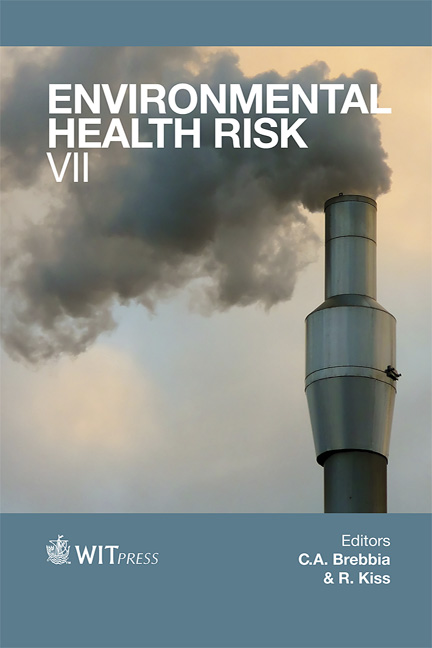Environmental Impact Caused By Fungal And Particle Contamination Of Portuguese Swine
Price
Free (open access)
Transaction
Volume
16
Pages
13
Page Range
11 - 23
Published
2013
Size
465 kb
Paper DOI
10.2495/EHR130021
Copyright
WIT Press
Author(s)
C. Viegas, S. Viegas, M. Almeida-Silva, C. Veríssimo & R. Sabino
Abstract
Social concerns for environmental impact on air, water and soil pollution have grown along with the accelerated growth of pig production. This study intends to characterize air contamination caused by fungi and particles in swine production, and, additionally, to conclude about their eventual environmental impact. Fiftysix air samples of 50 litters were collected through impaction method. Air sampling and particle matter concentration were performed in indoor and also outdoor premises. Simultaneously, temperature and relative humidity were monitored according to the International Standard ISO 7726 – 1998. Aspergillus versicolor presents the highest indoor spore counts (>2000 CFU/m3) and the highest overall prevalence (40.5%), followed by Scopulariopsis brevicaulis (17.0%) and Penicillium sp. (14.1%). All the swine farms showed indoor fungal species different from the ones identified outdoors and the most frequent genera were also different from the ones indoors. The distribution of particle size showed the same tendency in all swine farms (higher concentration values in PM5 and PM10 sizes). Through the ratio between the indoor and outdoor values, it was possible to conclude that CFU/m3 and particles presented an eventual impact in outdoor measurements. Besides its potential environmental impact,
Keywords
swine, fungal contamination, particles, air contamination, environmental impact





